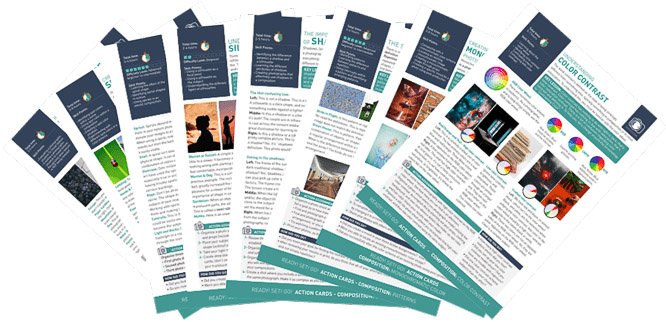Learning the technical aspect of photography is as important as its creative side. Even if you do not want to study all the details, it is helpful to understand basic photography terms.
One of those terms is the crop factor. You have to be mindful of the crop factor when using a crop sensor camera with a full frame lens. This is why we have collected all the information you need to know to understand what the crop factor is.
What Is the Crop Factor?
APS (Advanced Photo System) was a film cameras format that utilised three image formats at once. It was the origin of the modern crop sensor and gave amateur photographers advanced customisability.
Digital cameras reinvented and interpreted this technology. When digital cameras were made with smaller sensors, it resulted in smaller and cheaper camera bodies. These are crop sensors.
Professional cameras have a sensor the same size as a piece of 35mm film. This size is called a full frame. Full frame lenses cover a wider area than the crop sensor can capture. Most professional lenses were designed for full frame cameras. Putting one of these lenses onto a body with a crop sensor produces the crop factor.
In both below pictures, there is a full frame lens inserted on a full frame camera.
On the left, you can see the projection of the image projected onto a crop sensor. You can see that the lens covers a wider area than the crop sensor can capture.
On the right, you see what the camera is doing when using a full frame lens on a crop sensor camera. It brings the image closer so that it fills the frame. This results in the edges of the image being cropped out.
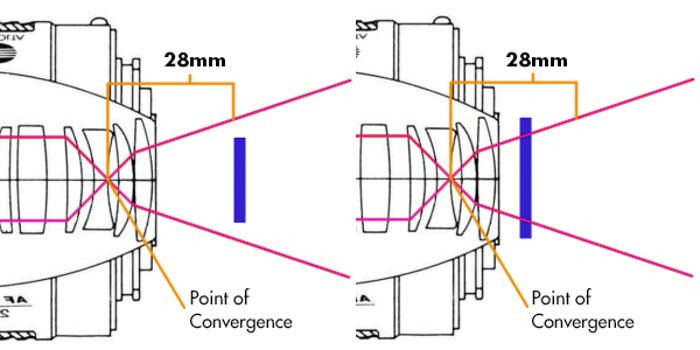
As you can see, you are cropping a lot of the frame when you use a full frame lens.
Let’s look at it from another angle. A circular lens produces a circular image. Then the sensor crops it depending on the sensor size. Full frame sensors are all the same size. Crop sensor sizes tend to vary between manufacturers.
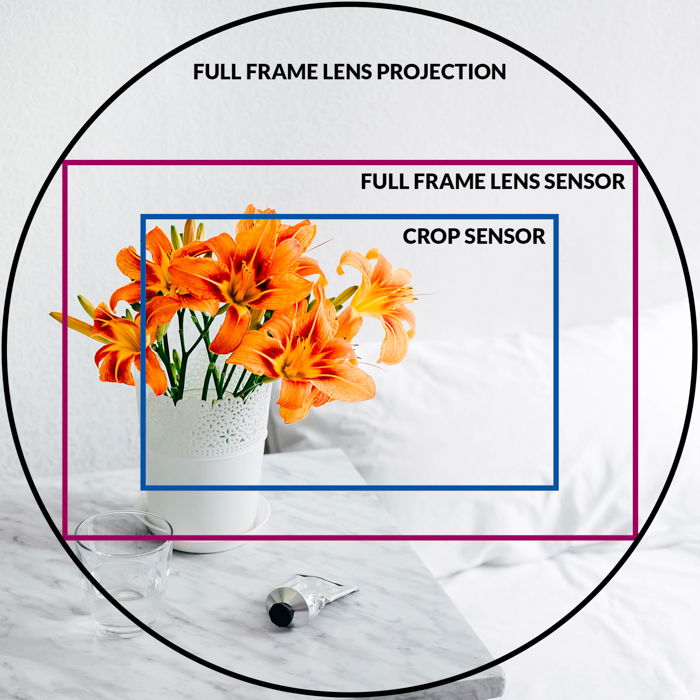
What Are Different Types of Crop Factors?
Crop factor is visible when shooting with APS-C, APS-H, Micro Four Thirds, compact cameras, and smartphones.
Micro Four Thirds was the standard sensor for DSLR and mirrorless cameras. They have a magnification of 2x, which results in a 50mm lens having an equivalent focal length of 100mm.
APS-H is Canon’s unique sensor size, which is somewhere between full frame and APS-C. Here, the magnification is 1.3x.
However, the most common crop sensors are APS-C sensors. Most camera manufacturers use them, and they produce almost the same amount of magnification (1.5x).
What Does The Crop Factor Mean in Practice?
If you put a 50mm lens on a crop sensor body, the effective focal length will be 50x 1.5 = 75mm.
The main difference is that Canon’s APS-C sensor is smaller than the other brands’. For this reason, it magnifies the image by 1.6 instead of 1.5, which results in an equivalent focal length of 80mm.
This means if you put a 50mm lens designed for a full frame camera onto a crop sensor body, the focal length would be 80mm, rather than 50mm.
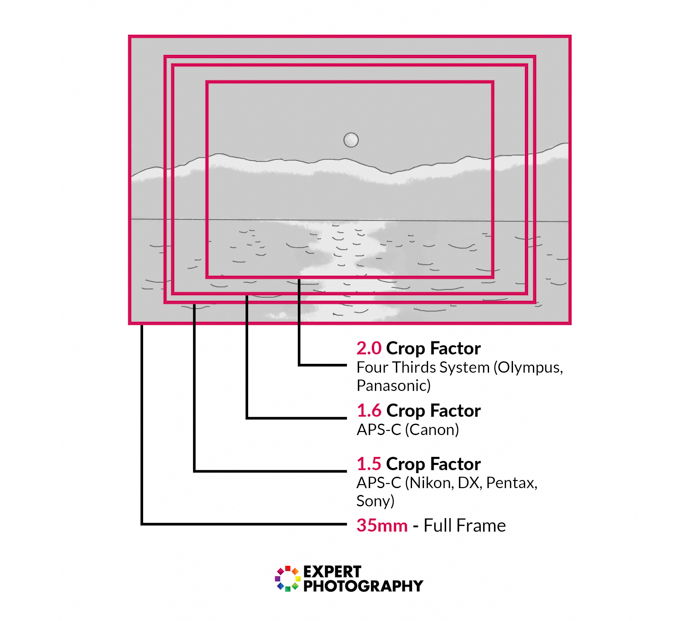
When Should You Buy Full-Frame Lenses?
My best piece of advice is to consider what you want to do with your photography. Are you going to want to upgrade the body soon or shoot very wide angles? Then you will be able to choose the lens that is right for you.
APS-C bodies are compatible with full frame lenses, but full frame cameras cannot handle APS-C lenses. This means you can switch lenses between APS-C and full frame cameras; however, if you have the chance, always opt for buying full frame lenses.
This is especially true if you plan to upgrade your APS-C system to full frame in the future. It is easier if you invest money into a great full frame lens right at the start so that later you do not have to worry about the changes in sensor size.
The lenses made for professional, full frame cameras are also of better quality. They have been around long before digital cameras became popular and provide the speed and accuracy you would expect for the price. Prime lenses, in particular, tend to be made for full frame cameras. 50mm is a great focal length when you are using a full frame camera, but that might be too tight on a crop sensor.
There are some exceptions. For example, you cannot use Panasonic full frame lenses on Panasonic crop sensor cameras. This is why it is crucial to do your research before buying a lens.
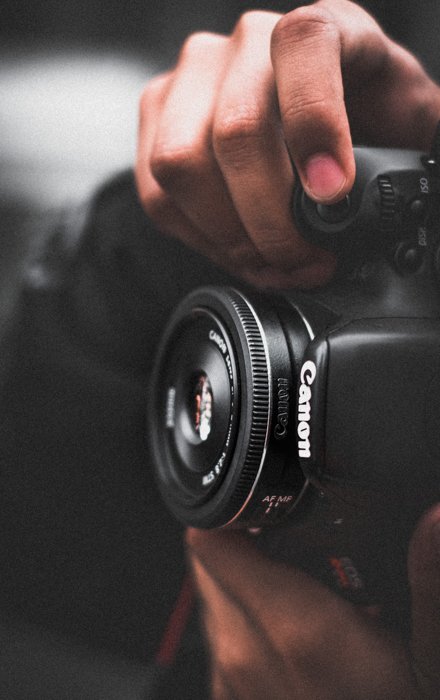
When Is It Worth Buying Crop Sensor Cameras?
Some advantages make them great for beginners. They are affordable since the production of the smaller sensor is cheaper. There is also a more extensive lens availability, as you can use both crop and full frame lenses with them.
On top of that, there are some niches where you can enjoy the crop factor. For example, in nature or action photography, it is helpful to have extra magnification.
If you are a beginner, you should go for an APS-C body. The user-friendly interface and the considerable lens compatibility make it perfect to start with. But make sure to buy full frame lenses so that transitioning to a full frame camera later will be smooth.
On the other hand, if you are a professional sports or wildlife photographer, you might want to keep using a crop sensor. Not only does the magnification come in handy. They are also smaller and lighter.
What Are the Drawbacks to Crop Sensor Cameras?
Crop sensor bodies cannot handle low light situations as well as full frame cameras. The resolution and pixel density are lower because the lens cannot project the same quality on a crop sensor. This results in worse image quality, affecting print quality as well.
As always, there are exceptions. Fuji XT-4, Nikon D500, and Canon 7D Mark II are examples of excellent crop sensor cameras. They are competitors to some of the low-end full frame bodies. Even professional reporter cameras with crop sensors (such as the Canon 1D series) still offer high quality and a fast burst rate.

Conclusion
The crop factor results from a full frame lens on a crop sensor camera body. Understanding this can come in handy when choosing cameras and lenses. It will help you predict how much of the scene you will be able to include in your frame with focal length.
Read our Photography for Beginners course for even more helpful information to kickstart your photography journey.
